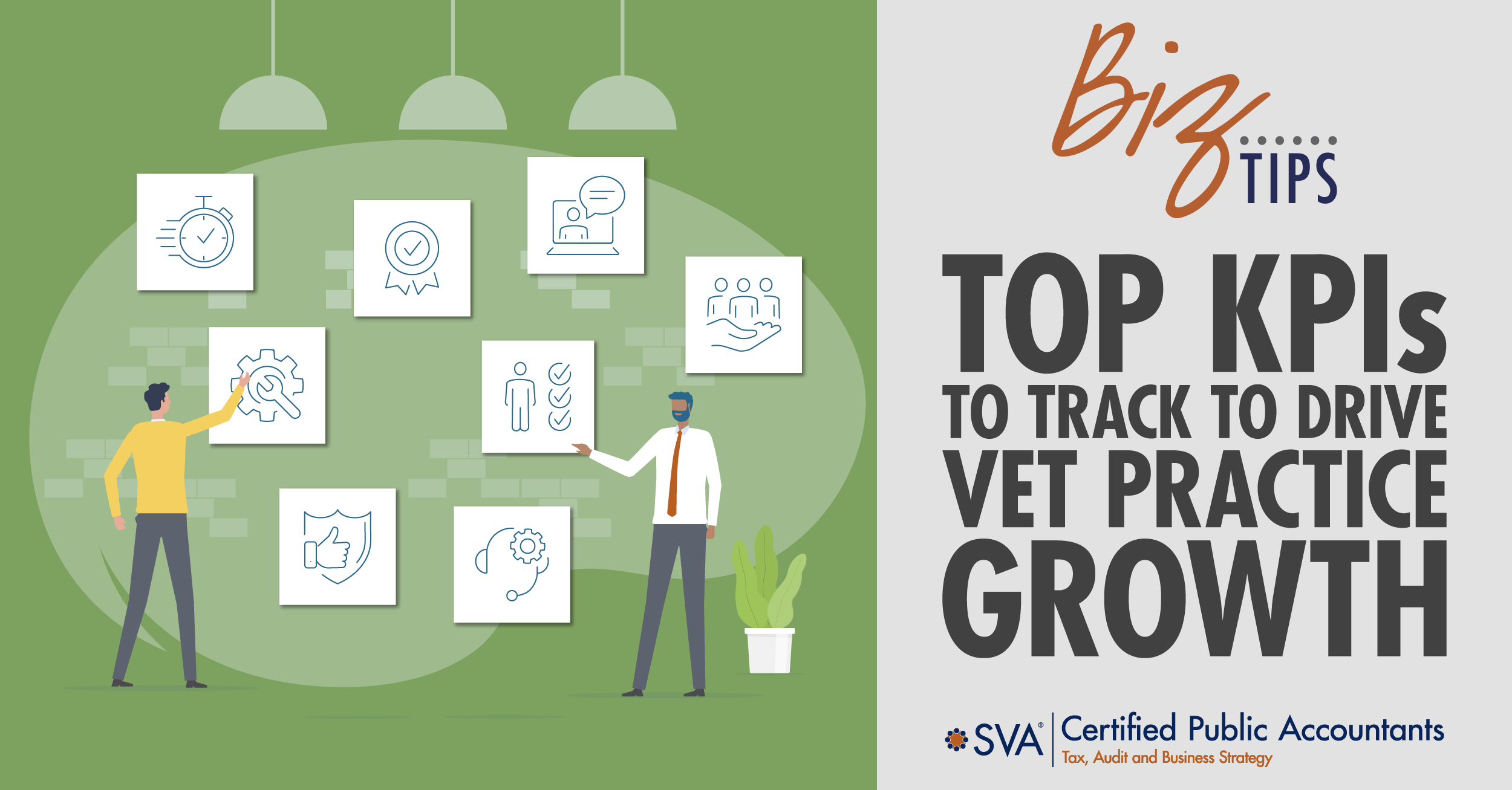Key performance indicators (KPIs) are metrics that can help measure and determine the health of your veterinary practice. KPIs should support the objectives and goals you have set for your practice and need to be based on timely, accurate information. KPIs can also provide insight into revenue, costs, and efficiencies.
Understanding and effectively utilizing key performance indicators (KPIs) is crucial for success in your veterinary practice. With an array of metrics available, it's essential to identify those that are most relevant and impactful for your practice.
These indicators are not just mere numbers. They are powerful tools that, when correctly measured and interpreted, can significantly improve practice health, profitability, and patient experience.
KPIs should be:
- Accessible
- Based on Accurate Data
- Timely
- Relevant/Insightful
- Adjustable to Different Timelines
Essential KPIs for Veterinary Practices
Understanding and accessing KPIs are crucial steps in leveraging them for practice improvement. Key metrics such as the number of invoices, average invoice value, and new patient acquisition rates offer insights into operational efficiency. For example, a good volume benchmark is between 4,000 to 4,800 invoices per veterinarian.
Revenue Metrics: A Core Focus
Revenue per veterinarian is a vital KPI. A healthy range for small animal practices is at least $700,000 per veterinarian, with high-performing practices reaching $850,000 or more.
For large animal practices, a minimum of $250,000 with top performers achieving more than $375,000 is indicative of efficient operations.
Staff Efficiency and Leverage
Staff leverage is another critical metric. Effective practices can have a staff-to-veterinarian ratio as high as 7:1. For non-veterinarian staff revenue contribution, a minimum of $190,000, with high performers exceeding $215,000, indicates optimal staff utilization.
Cost Structures and Profitability
Understanding cost structures like the total cost of goods sold is pivotal. Aiming for less than 25% of revenue in this area is ideal, with top clinics achieving around 21%. Non-veterinary staff expenses should ideally be around 20% of revenue, with payroll expenses (excluding taxes) around 18-19%.
Future Planning and Goals
Strategic planning using KPIs is vital for growth and sustainability. This includes evaluating the practice's value for potential sales or expansions and understanding the evolving dynamics of the veterinary market.
The Importance of Accurate and Timely Data
The foundation of effective KPI management is accurate and timely data. Making decisions based on outdated or inaccurate information can be detrimental to your practice.
Regular review of financial reports and engagement with trusted advisors are recommended. Practices should allocate time to work “on” the business, not just “in” it.
Practical Steps for Practice Owners
Evaluating and adjusting fees and markups are a good place to start when considering how to act on your KPI goals, as these directly impact profitability. Investing in efficient inventory management and staff training can also yield significant improvements.
Key Takeaways for Veterinary Practice Owners
| Invoice Volume |
Aim for 4,000 - 4,800 invoices per veterinarian. |
| Revenue Metrics |
Small animal practices should target $700,000 - $850,000 in revenue per veterinarian, and large animal practices $250,000 - $375,000. |
| Staff Leverage |
Effective staff-to-veterinarian ratios can be as high as 7:1. |
| Cost Management |
Strive for the total cost of goods sold to be under 25% of revenue, and staff expenses around 20%. |
| Data Utilization |
Regularly review financial data and engage with advisors for informed decision-making. |
For veterinary practice owners, mastering KPIs is not just about understanding numbers; it's about transforming those numbers into actionable strategies that foster growth, efficiency, and profitability.
Engaging with trusted advisors, regularly reviewing financial reports, and being open to changes are key to leveraging KPIs for continual practice improvement.
© 2023 SVA Certified Public Accountants

